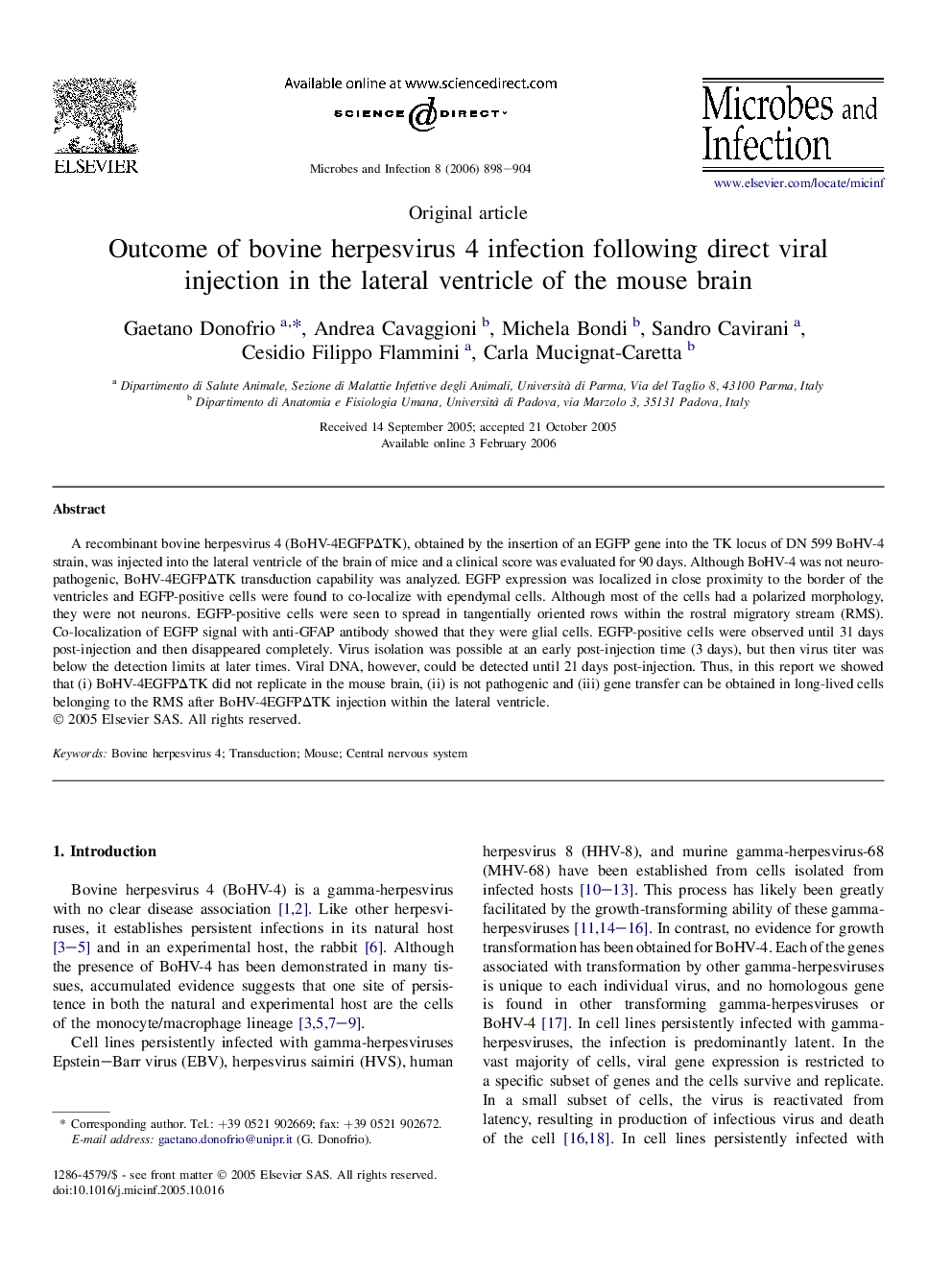| Article ID | Journal | Published Year | Pages | File Type |
|---|---|---|---|---|
| 3416185 | Microbes and Infection | 2006 | 7 Pages |
A recombinant bovine herpesvirus 4 (BoHV-4EGFPΔTK), obtained by the insertion of an EGFP gene into the TK locus of DN 599 BoHV-4 strain, was injected into the lateral ventricle of the brain of mice and a clinical score was evaluated for 90 days. Although BoHV-4 was not neuro-pathogenic, BoHV-4EGFPΔTK transduction capability was analyzed. EGFP expression was localized in close proximity to the border of the ventricles and EGFP-positive cells were found to co-localize with ependymal cells. Although most of the cells had a polarized morphology, they were not neurons. EGFP-positive cells were seen to spread in tangentially oriented rows within the rostral migratory stream (RMS). Co-localization of EGFP signal with anti-GFAP antibody showed that they were glial cells. EGFP-positive cells were observed until 31 days post-injection and then disappeared completely. Virus isolation was possible at an early post-injection time (3 days), but then virus titer was below the detection limits at later times. Viral DNA, however, could be detected until 21 days post-injection. Thus, in this report we showed that (i) BoHV-4EGFPΔTK did not replicate in the mouse brain, (ii) is not pathogenic and (iii) gene transfer can be obtained in long-lived cells belonging to the RMS after BoHV-4EGFPΔTK injection within the lateral ventricle.
